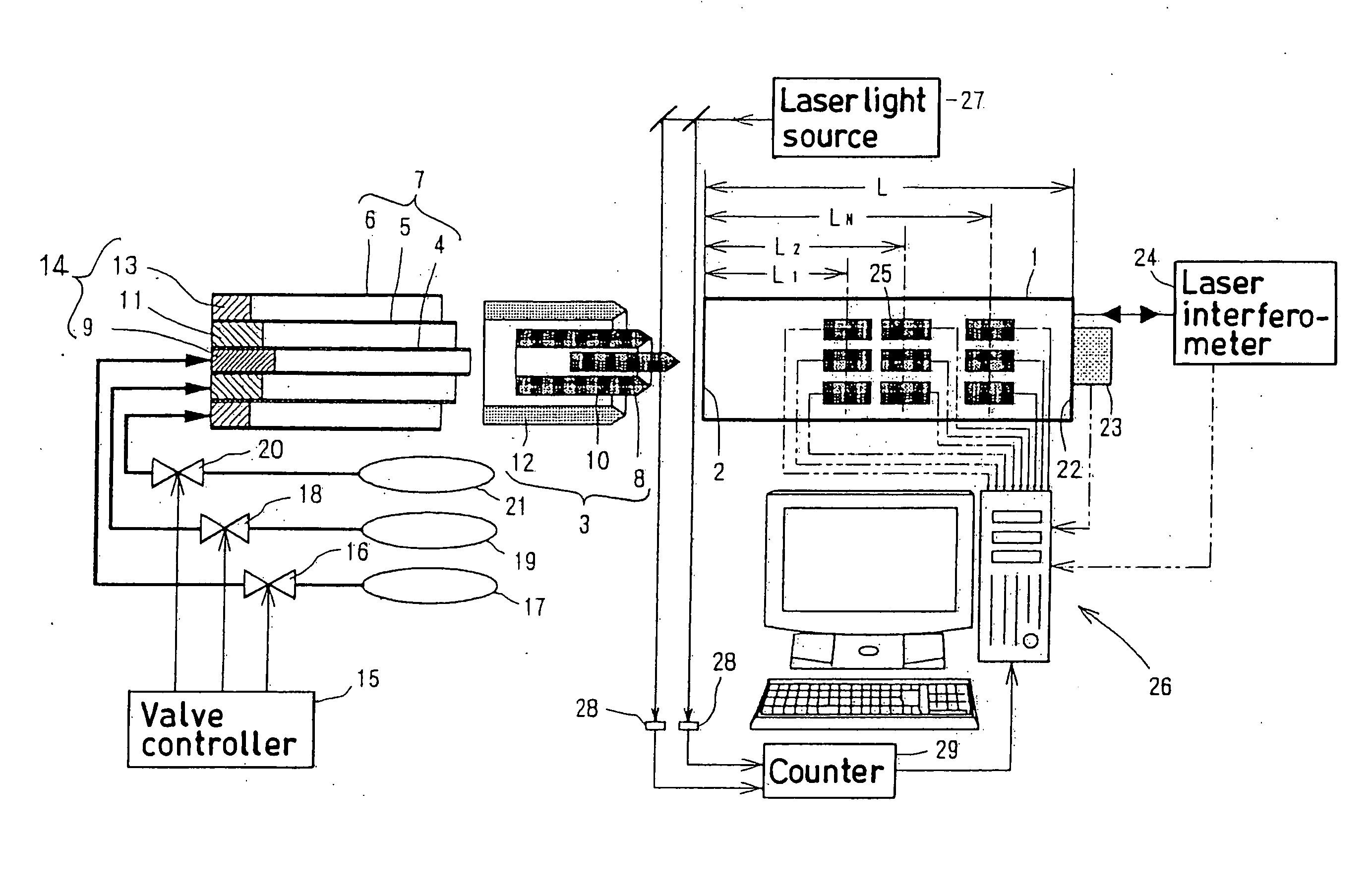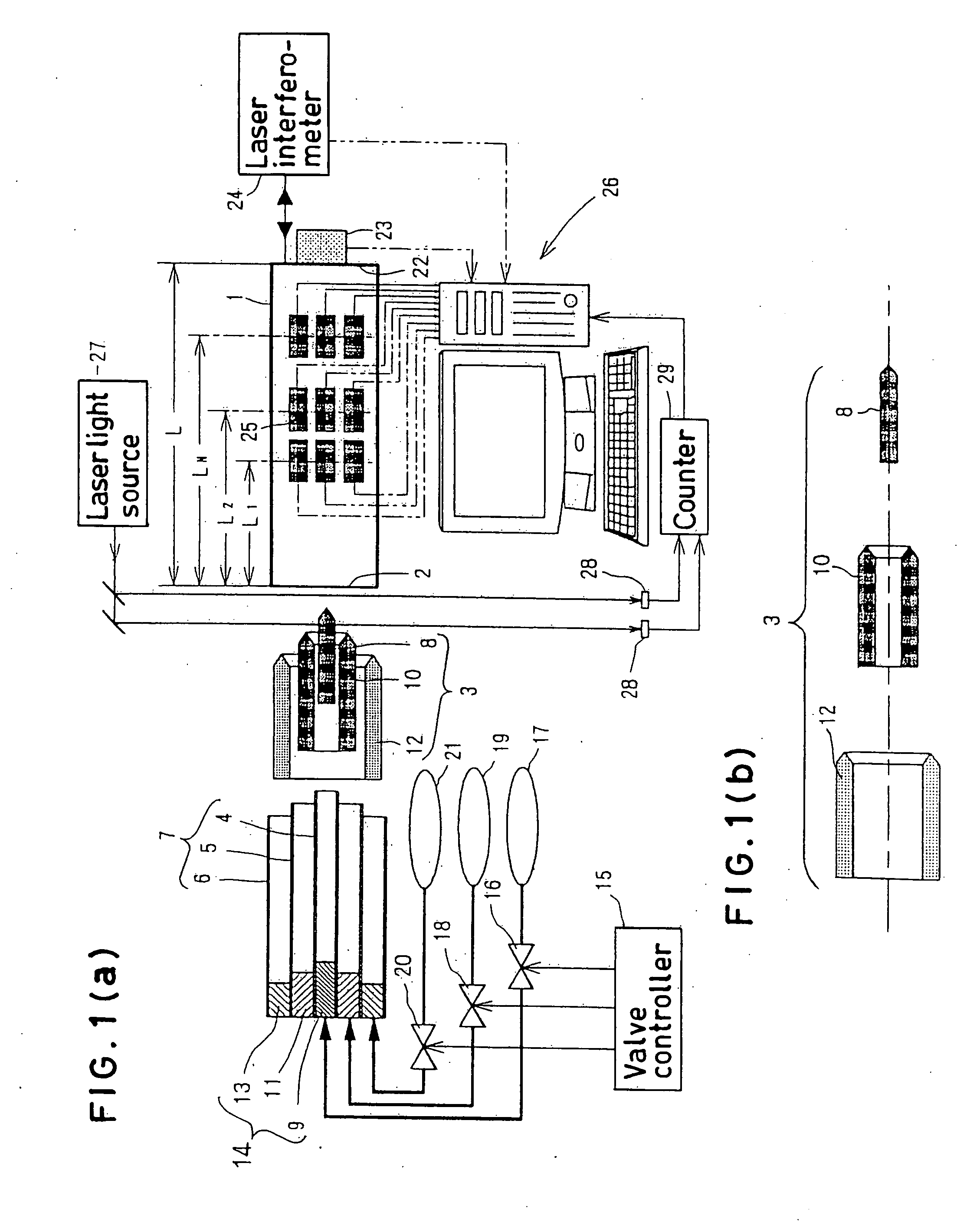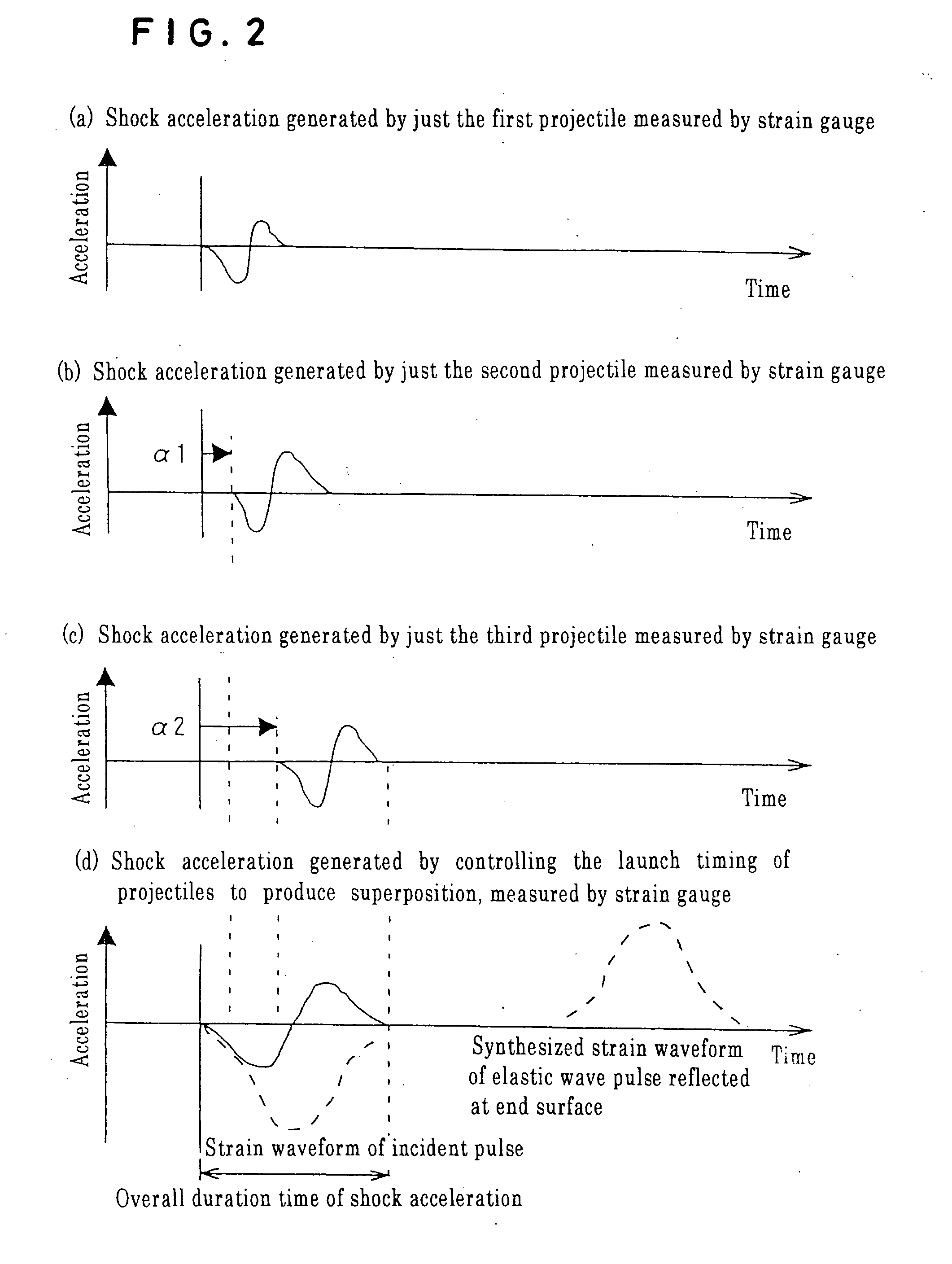Calibration evaluation method and device for acceleration sensor
- Summary
- Abstract
- Description
- Claims
- Application Information
AI Technical Summary
Benefits of technology
Problems solved by technology
Method used
Image
Examples
Embodiment Construction
[0031]FIG. 1(a) shows an example of the acceleration sensor calibration and evaluation apparatus according to the present invention. A plurality of projectiles 3, described later, impact a first end surface 2 of a metal rod 1 to generate an elastic wave pulse therein. For doing this, a multiple launch tube 7 having n (n=1 . . . N, innermost being 1, outermost being N) tubes, is used. In the illustrated example, the multiple launch tube 7 has three launch tubes: a center launch tube 4, a middle launch tube 5 and an outer launch tube 6. A multiplicity of n (n=1 . . . N, innermost being 1, outermost being N) projectiles 3 are launched at prescribed time intervals from this multiple launch tube 7.
[0032] In the illustrated example, a cylindrical first projectile 8 can be independently launched from the interior of the center launch tube 4 by a first launch apparatus 9, an annular second projectile 10 can be independently launched from the annular space between the center launch tube 4 a...
PUM
 Login to View More
Login to View More Abstract
Description
Claims
Application Information
 Login to View More
Login to View More - R&D
- Intellectual Property
- Life Sciences
- Materials
- Tech Scout
- Unparalleled Data Quality
- Higher Quality Content
- 60% Fewer Hallucinations
Browse by: Latest US Patents, China's latest patents, Technical Efficacy Thesaurus, Application Domain, Technology Topic, Popular Technical Reports.
© 2025 PatSnap. All rights reserved.Legal|Privacy policy|Modern Slavery Act Transparency Statement|Sitemap|About US| Contact US: help@patsnap.com



